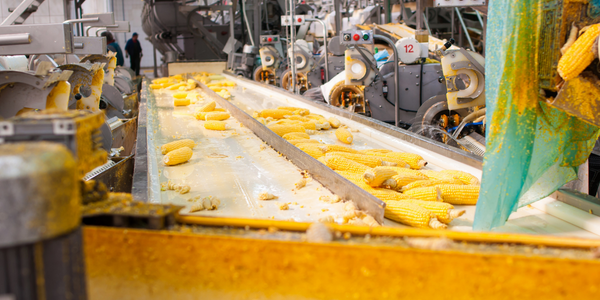WIN-911
Case Studies
NESTLÉ USES WIN-911 PRO MOBILE ALERTS FOR REFRIGERATION ALARMS RESULTING IN LESS
Overview
 |
NESTLÉ USES WIN-911 PRO MOBILE ALERTS FOR REFRIGERATION ALARMS RESULTING IN LESSWIN-911 |

|
Functional Applications - Remote Monitoring & Control Systems Infrastructure as a Service (IaaS) Sensors - Temperature Sensors | |
Food & Beverage | |
Business Operation | |
Machine Condition Monitoring | |
Operational Impact
| [Efficiency Improvement - Production Uptime] MOBILE ALERTS DECREASE TECH RESPONSE TIME AND MINIMIZE DOWNTIME The primary refrigeration system at Nestlé is monitored by a local programmable logic controller (PLC) that controls a general alarm and several minor alarm triggers. Temperature alarms measure the temperature output of multiple interconnected systems at various stages of production. Each of these systems—including the spiral freezer, hardening tunnels, and storage areas for raw ingredients and finished products—require their own specific temperature settings. The facility’s ammonia refrigeration system is also monitored for temperature and ammonia levels to prevent critical failures, such as a malfunctioning compressor. Before WIN-911 Pro, an alarm triggered at the ice cream freezing facility required manual acknowledgement at the onsite HMI console. No mobile communication options were in place. If a technician was busy in another part of the plant, or somewhere offsite, they would need to return to the console to acknowledge and address the alarm. This process typically could take up to an hour. All alarms received the same notification, which meant technicians would have to go through and individually assess the alarms at the console. They were unable to sort them by severity, cause, or location, which created the risk of catastrophic product loss by way of unnoticed or unacknowledged failures. Promptly informing refrigeration technicians of an alarm was a big challenge. Some alarms are capable of shutting down the spiral freezers, hardening tunnels, or other equipment, so immediate response was crucial. In the worst-case scenario, an unacknowledged issue could cause the engine room to shut down, forcing the production line to halt. This would cause product loss of raw ingredients such as cream and egg yolks, variegates and particulates (the fudge swirls, chocolate chips, and other morsels that make Nestlé ice cream so delicious). With WIN-911 Pro successfully installed, refrigeration techs can now receive notice of an alarm as soon as it is triggered, even when they are offsite. WIN-911 Pro is able to send alarm notifications via any mobile device, making it faster and easier to get in touch with the right personnel whenever an alarm is set off. | |
| [Efficiency Improvement - Operation] OPERATE AUTOMATED FOOD PROCESSING PLANTS WITH CONFIDENCE Installing WIN-911 was easy. Alarm tags were quickly imported and no major changes to the structure of the system were required. The alarms did not need to be reprogrammed or altered and their triggers remained the same. WIN-911 Pro did allow Nestlé to design a notification workflow; their alarms are now tailored for a more efficient notification process that sends immediate notice to the right refrigeration techs on duty. By using the same alarm structure and taking advantage of the mobile alert capabilities of WIN-911 Pro, the Nestlé ice cream freezing facility streamlined their operations, minimized downtime, and dramatically decreased technician response time to problem conditions. WIN-911’s flexibility and easy integration have encouraged the company to consider applying WIN-911 in other areas of the facility, such as maintenance and conveyor systems. | |


